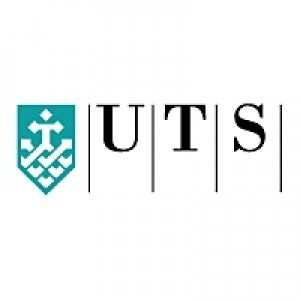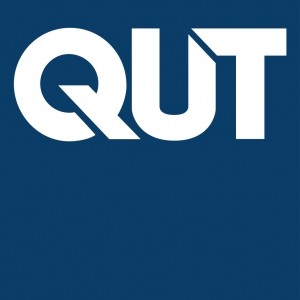Photos of university / #uow
Work Health and Safety (WHS) provides students with comprehensive knowledge and practical skills necessary to promote safe and healthy working environments across various industries. This program covers a range of essential topics, including hazard identification and risk management, legislation and compliance requirements, safety management systems, incident investigation, ergonomics, and occupational health. Students will explore the legal, ethical, and social responsibilities associated with ensuring workplace safety, preparing them for a variety of roles within occupational health and safety management. The curriculum emphasizes not only theoretical understanding but also practical application through case studies, industry placements, and collaborative projects with employers. Through this program, students develop the ability to analyze work environments, formulate effective safety policies, and implement preventive strategies to reduce workplace injuries and illnesses. The program is designed to meet the evolving demands of the industry, equipping graduates with the skills to lead safety initiatives, conduct thorough risk assessments, and foster a culture of safety within organizations. It aligns with national and international WHS standards, ensuring graduates are prepared for employment in diverse sectors such as construction, manufacturing, healthcare, and government agencies. The program also offers pathways for further study and continuous professional development, positioning graduates as key contributors to sustainable and responsible workplace practices. With a focus on real-world applications and up-to-date industry standards, the Work Health and Safety program aims to prepare students to proactively protect workers and improve organizational safety performance in an ever-changing work environment.
The Accreditation Certificate isn't qualified to receive professional certification because of the limited reach of study. If, though, a student applies for admission to the Graduate Diploma on successful completion of the Accreditation Certificate, all subjects may be applied as student loan. Please refer to the Graduate Diploma of Work Safety and Health and Pros of Work Safety and Health for specialist recognition and certification at that level. Please be aware that successful conclusion of H AS 870 is utilized to make an application for an exemption to the mandatory WorkCover NSW 2 Day Return to Work Coordinator training.
- Bachelor's degree of at least 3 years' duration from a recognised tertiary institution or equivalent
- or Perhaps Some Certificate IV in Occupational Health and Safety plus relevant work experience
The Work Health and Safety program at the University of Wollongong offers comprehensive information regarding its financing options and associated costs to ensure students are well-informed about the financial commitments involved. Tuition fees for domestic students are subject to annual adjustments and are determined based on the specific degree and study load. As of the latest academic year, the indicative annual tuition fee for undergraduate programs in Work Health and Safety is approximately AUD 8,000 to AUD 12,000. International students, on the other hand, can expect higher tuition fees, typically ranging from AUD 25,000 to AUD 35,000 per year, reflecting the university's international fee structure. These fees cover tuition, access to university facilities, and academic resources essential for the successful completion of the program.
In addition to tuition, students should consider potential costs for textbooks, supplies, and other learning materials, which can vary but generally amount to several hundred dollars per semester. The university provides a range of financial aid options, including government-supported scholarships, grants, and bursaries designed to assist both domestic and international students in managing their educational expenses. International students are also eligible for a Student Visa, which requires satisfactory proof of financial capacity to cover tuition fees, living expenses, and other costs for the duration of their stay in Australia.
Funding opportunities may include external scholarships, such as those provided by government agencies, industry partners, and philanthropic organizations, as well as university-specific scholarships for academic excellence, leadership, or financial need. The university also offers flexible payment plans, allowing students to pay tuition fees in installments rather than a single lump sum, easing financial pressure throughout the academic year.
Students are encouraged to utilize the university’s online cost calculator and financial aid advising services to better understand the total cost of their studies and explore available funding options. International students should also consider additional expenses such as health insurance, accommodation, and daily living costs when planning their budget. The university promotes transparency regarding all financial aspects involved in undertaking the Work Health and Safety program, aiming to support students in making informed decisions about their education financing.
The Work Health and Safety program at the University of Wollongong is designed to equip students with comprehensive knowledge and practical skills necessary to promote safety and health in various workplace environments. This program covers a broad range of topics, including occupational health principles, risk management, hazard identification, safety legislation, and accident prevention strategies. Students are introduced to the core concepts of work health and safety management systems, learning how to develop, implement, and evaluate safety protocols aligned with national standards.
The curriculum emphasizes the importance of proactive safety culture, effective communication, and leadership in managing workplace risks. It integrates theoretical foundations with practical applications through case studies, simulations, and internships, enabling students to apply their knowledge in real-world scenarios. The program also addresses emerging issues related to workplace safety, such as technological advancements, mental health considerations, and the management of hazardous materials.
Students enrolled in this program have access to modern laboratories and learning facilities that mimic real workplace environments, enhancing experiential learning. The University of Wollongong also fosters strong industry partnerships, providing students with opportunities for internships, industry placements, and collaborative projects that enhance employability and practical understanding.
Graduates of the Work Health and Safety program are prepared for careers in various sectors, including construction, manufacturing, healthcare, transportation, and public administration. They are equipped with skills to conduct safety audits, develop safety training programs, and ensure compliance with legal requirements. The program also emphasizes the importance of continuous learning and staying updated with changes in legislation and best practices in work health and safety.
Furthermore, the program promotes a multidisciplinary approach, encouraging students to consider ergonomic, environmental, and organizational factors that influence workplace safety. With an emphasis on ethical practice and social responsibility, students learn the significance of fostering a safe and healthy working environment for all employees and stakeholders. Overall, this program aims to produce competent professionals who can effectively manage and improve work health and safety standards across various industries, contributing to safer workplaces and improved health outcomes for workers.




